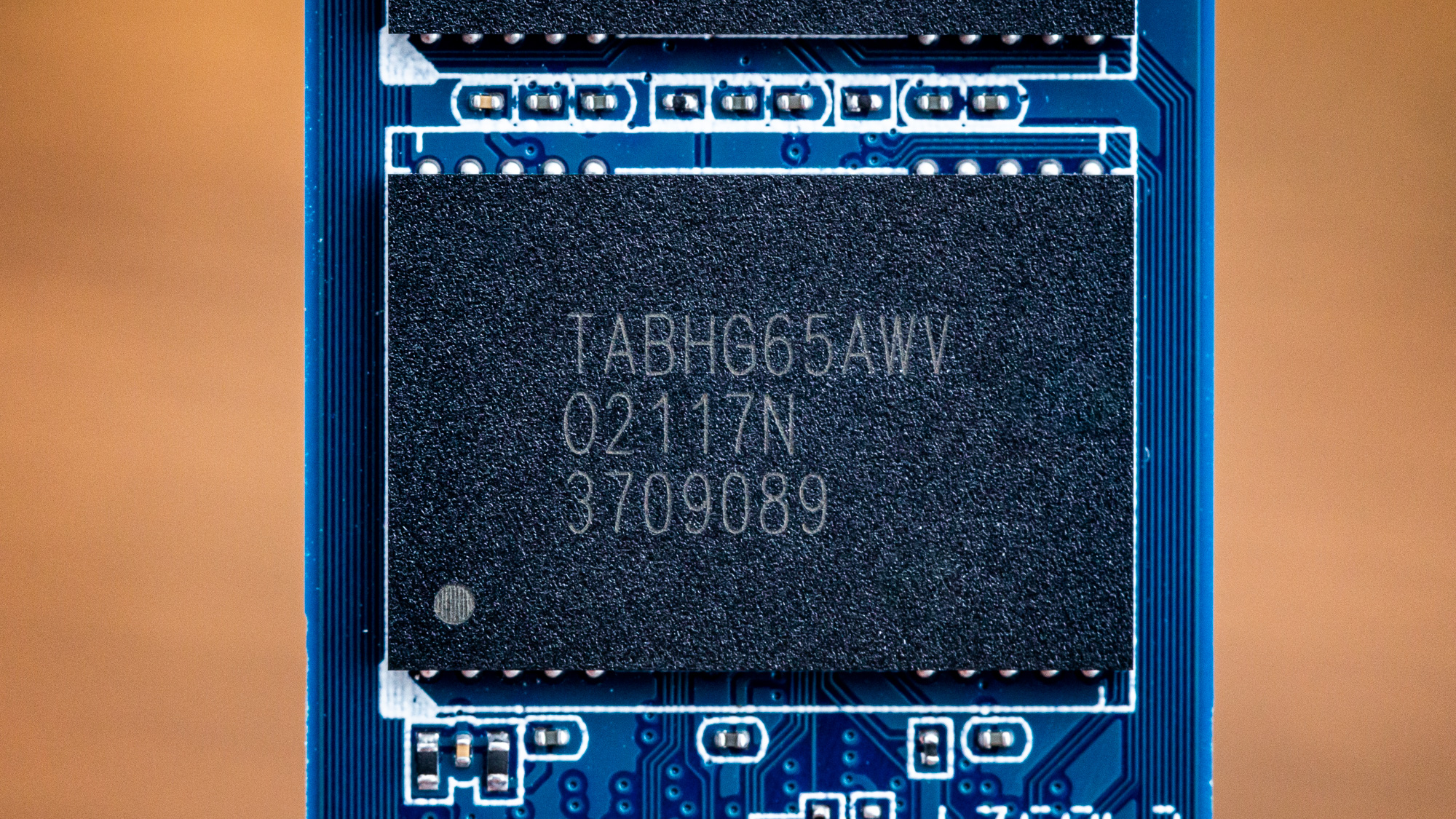Tom's Hardware Verdict
The Inland Performance is a suitable mid-range PCIe 4.0 SSD with some additional niche use, sold cheaply with no frills but a strong warranty. Its aged hardware faces stiff competition but it has advantages over slower-rated drives.
Pros
- +
Moderate all-around performance, consistent sustained performance
- +
Strong warranty in both TBW and period length
Cons
- -
No extras, software, etc; heatsink is optional and costs extra
- -
Has tough competition; hardware is showing its age
- -
Potential throttling, sans heatsink
Why you can trust Tom's Hardware
The Inland Performance is a mid-range PCIe 4.0 SSD suitable for a PlayStation 5 (PS5) or PC, bolstered by affordability combined with an excellent warranty. It can come either with or without a heatsink at various capacities up to 2TB and the Phison E16 SSD controller combined with TLC flash ensures performance and longevity with a minimalist approach that keeps costs down. However, this drive will face increasing competition from established drives with similar hardware and improved designs based on newer controllers and flash, as we see with the HP FX900.
Inland is Micro Center’s in-house SSD brand, and it really doesn’t do anything unique compared to other SSD manufacturers. The company licenses controllers and contracts out production with a bill of materials — a company in China usually handles the flash binning and overall drive assembly. This can lead to some variance in the NAND flash or DRAM over the products' lifetime, but it is an effective way to reduce costs. Inland then focuses on branding and marketing. Effectively this is generic storage that Micro Center wants you to pick up for convenience at a reasonable cost.
This production methodology actually fits a drive like the Performance — not to be confused with the Performance Plus — pretty well. If you just want to drop a drive into your PS5 or want to add some faster storage to your PC without a premium, this isn’t a bad option. You probably don’t need any frills, and being able to pick it up in-store can save you a trip or some waiting. Inland also offers a strong warranty with a similar avenue for replacement, so purchasing and returning have similar convenience. However, there are a lot of competitors in this space — is this drive fast enough to remain compelling?
Specifications
| Product | 512GB | 1TB | 2TB |
|---|---|---|---|
| Pricing (bare/HS) in $ | $69.99 | 99.99/104.99 | 179.99/199.99 |
| Capacity (User / Raw) | 500GB / 512GB | 1000GB / 1024GB | 2000GB / 2048GB |
| Form Factor | M.2 2280 | M.2 2280 | M.2 2280 |
| Interface / Protocol | PCIe 4.0 x4 / NVMe 1.4 | PCIe 4.0 x4 / NVMe 1.4 | PCIe 4.0 x4 / NVMe 1.4 |
| Controller | Phison PS5016-E16 | Phison PS5016-E16 | Phison PS5016-E16 |
| DRAM | DDR4 | DDR4 | DDR4 |
| Memory | Kioxia 96L (BiCS4) TLC | Kioxia 96L (BiCS4) TLC | Kioxia 96L (BiCS4) TLC |
| Sequential Read | 4,500 MBps | 5,000 MBps | 5,000 MBps |
| Sequential Write | 2,200 MBps | 4,300 MBps | 4,300 MBps |
| Random Read | N/A | 600K | 600K |
| Random Write | N/A | 500K | 500K |
| Security | N/A | N/A | N/A |
| Endurance (TBW) | 850 TB | 1,700 TBW | 3,500 TBW |
| Part Number | 953919 | 300749 | 329458 |
| Warranty | 6-Year | 6-Year | 6-Year |
The Inland Performance comes in three capacities spanning 512GB to 2TB, with the former only available with a heatsink. The drive is available both with and without a heatsink for the 1TB and 2TB models, although availability and pricing may vary. Specifically, it seems more of a sure thing to get the 1TB and 2TB heatsinked SKUs at Amazon. Micro Center typically has a lower price and, in general, the heatsinked variant is more expensive.
There’s nothing unexpected to be found with the performance numbers: the Performance can hit up to 5/4.3 GBps of sequential read/write throughput and 600K/500K random read/write IOPS. It qualifies for PS5 usage and offers higher peak throughput than PCIe 3.0 drives.
The warranty is quite good, with an insanely high TBW (terabytes written) endurance rating and a six-year warranty. The high endurance is for warrantied writes and isn't unusual for drives based on the Phison E16 SSD controller; it’s likely far higher than any user would ever need. Of more use is the warranty period, which is a year longer than the normal five-year period. In fact, many budget drives opt for a three-year warranty, so this is nice to see.
A Closer Look

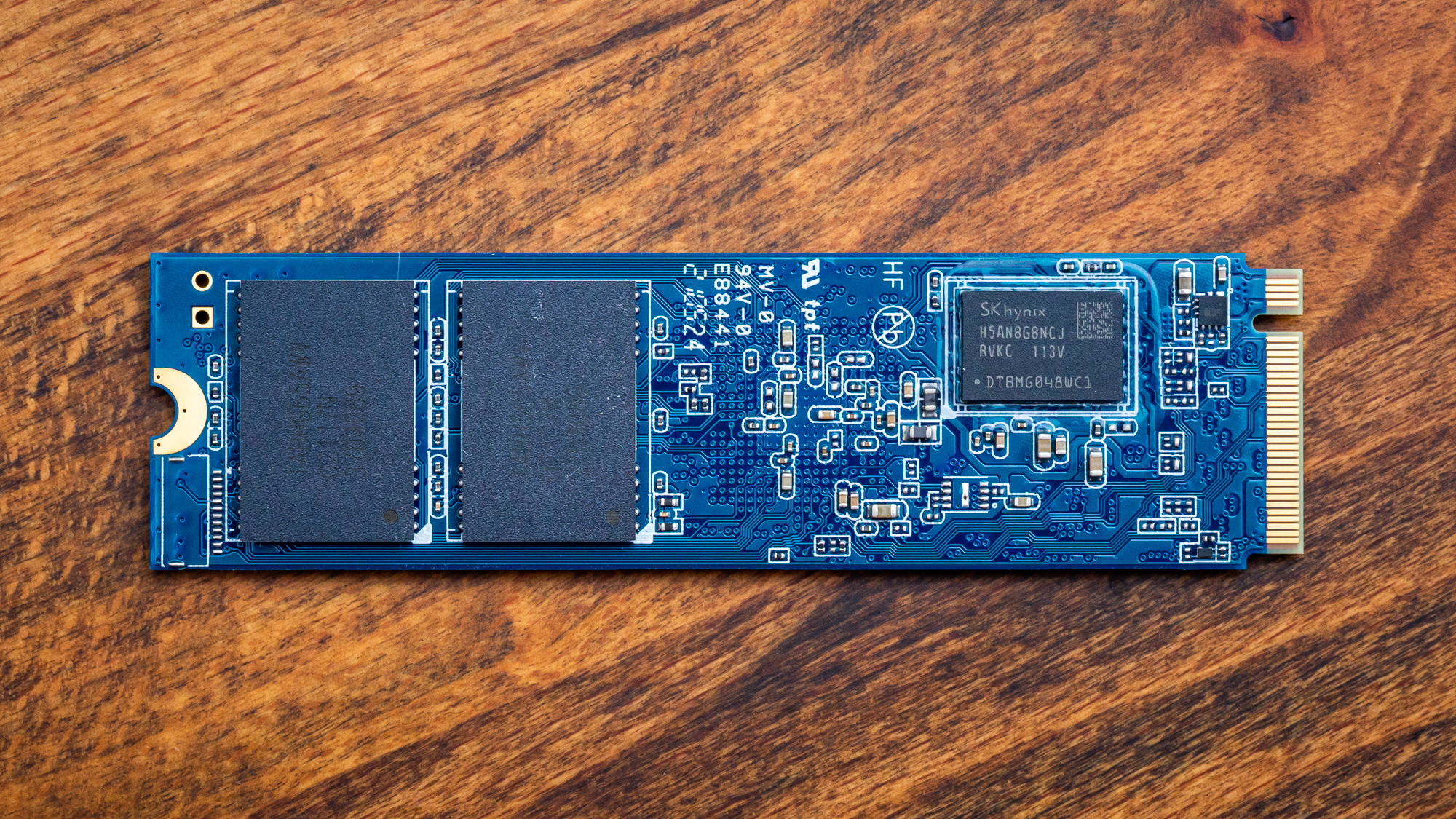
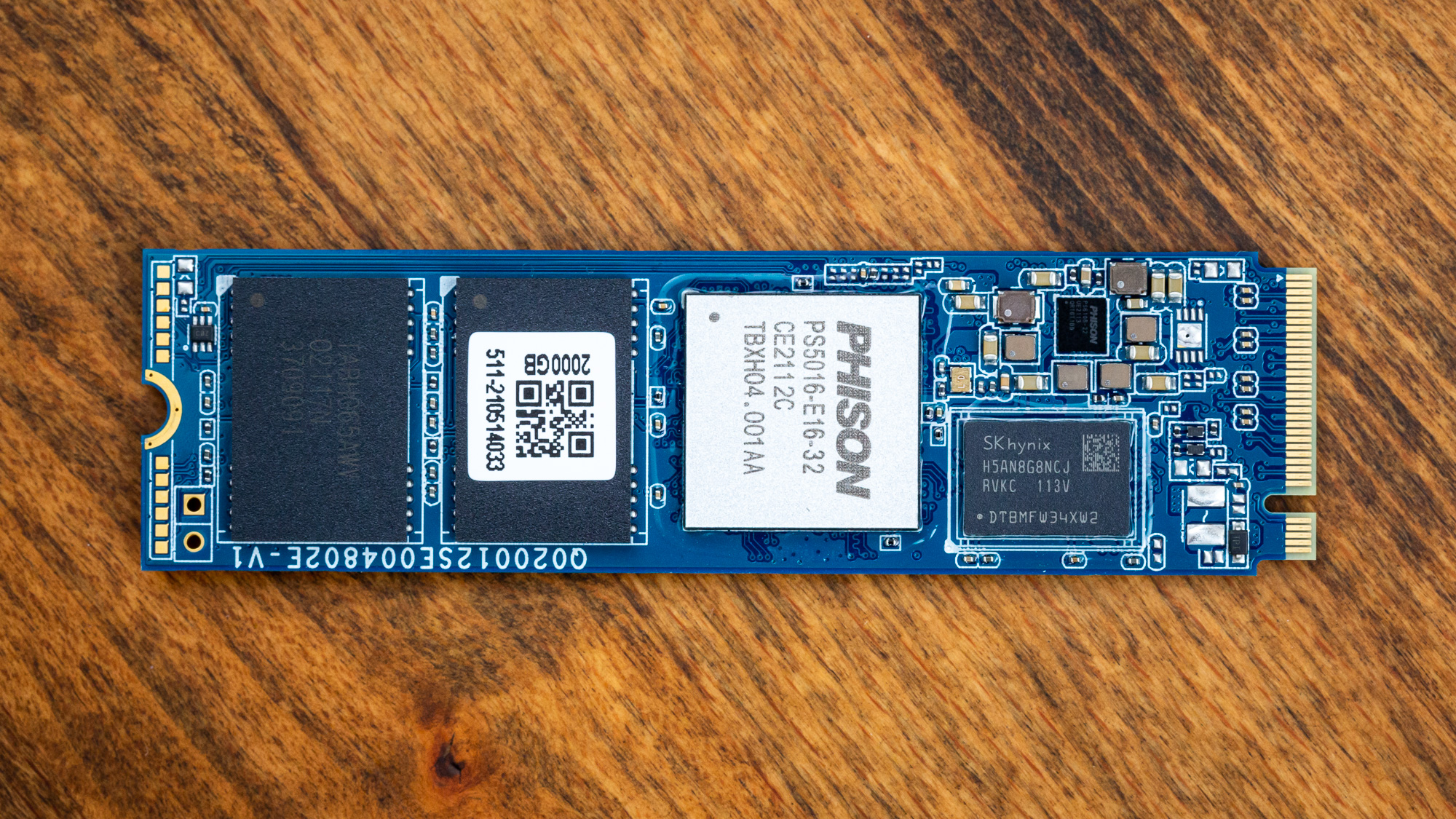
The front of the drive has a simple label containing basic information. When removed, the controller, DRAM package, and two NAND packages are revealed. As this is a 2TB SSD with a two-package-per-side layout, we also have two more NAND packages on the rear. We can also see an additional DRAM package.
Get Tom's Hardware's best news and in-depth reviews, straight to your inbox.
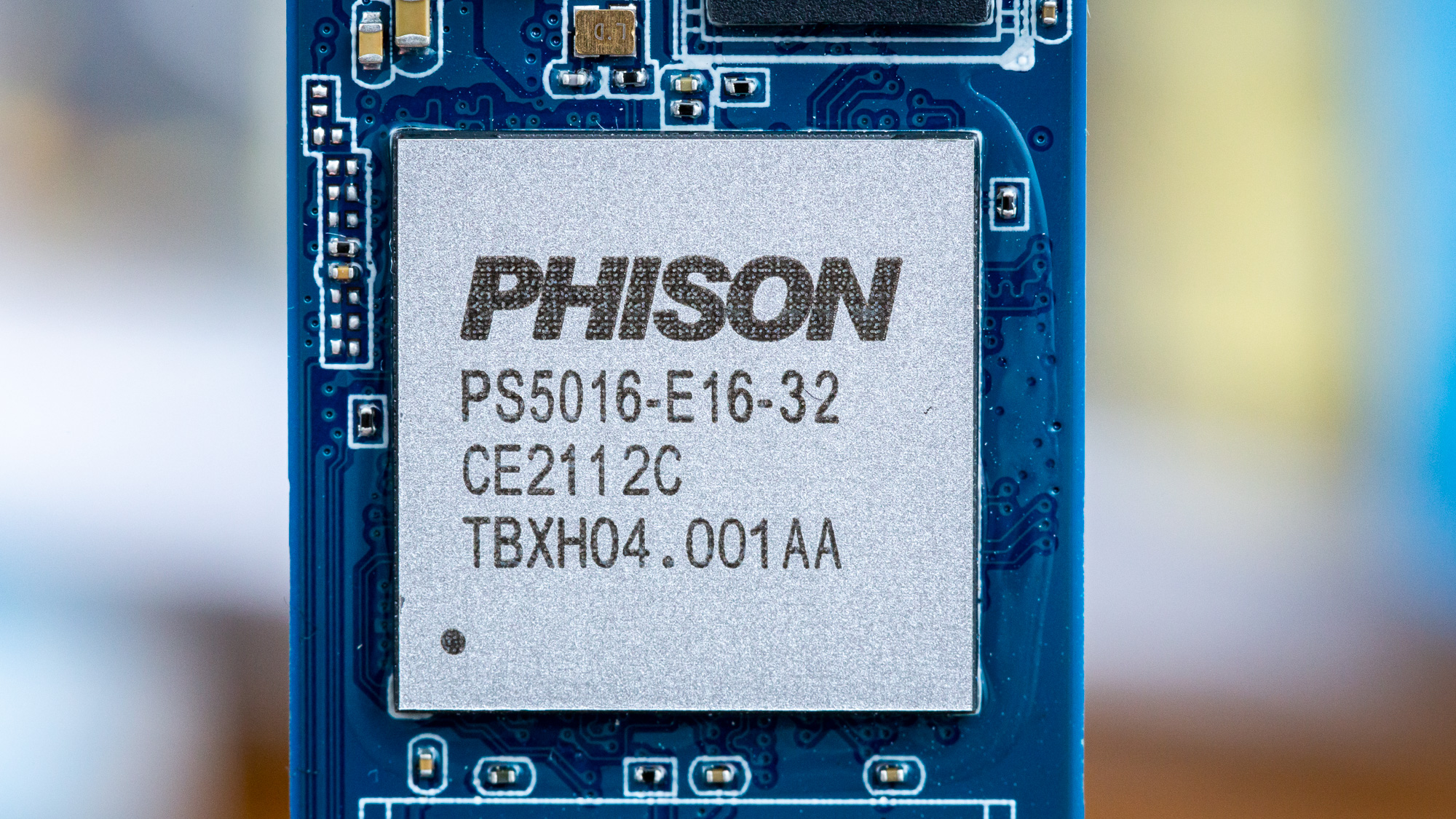
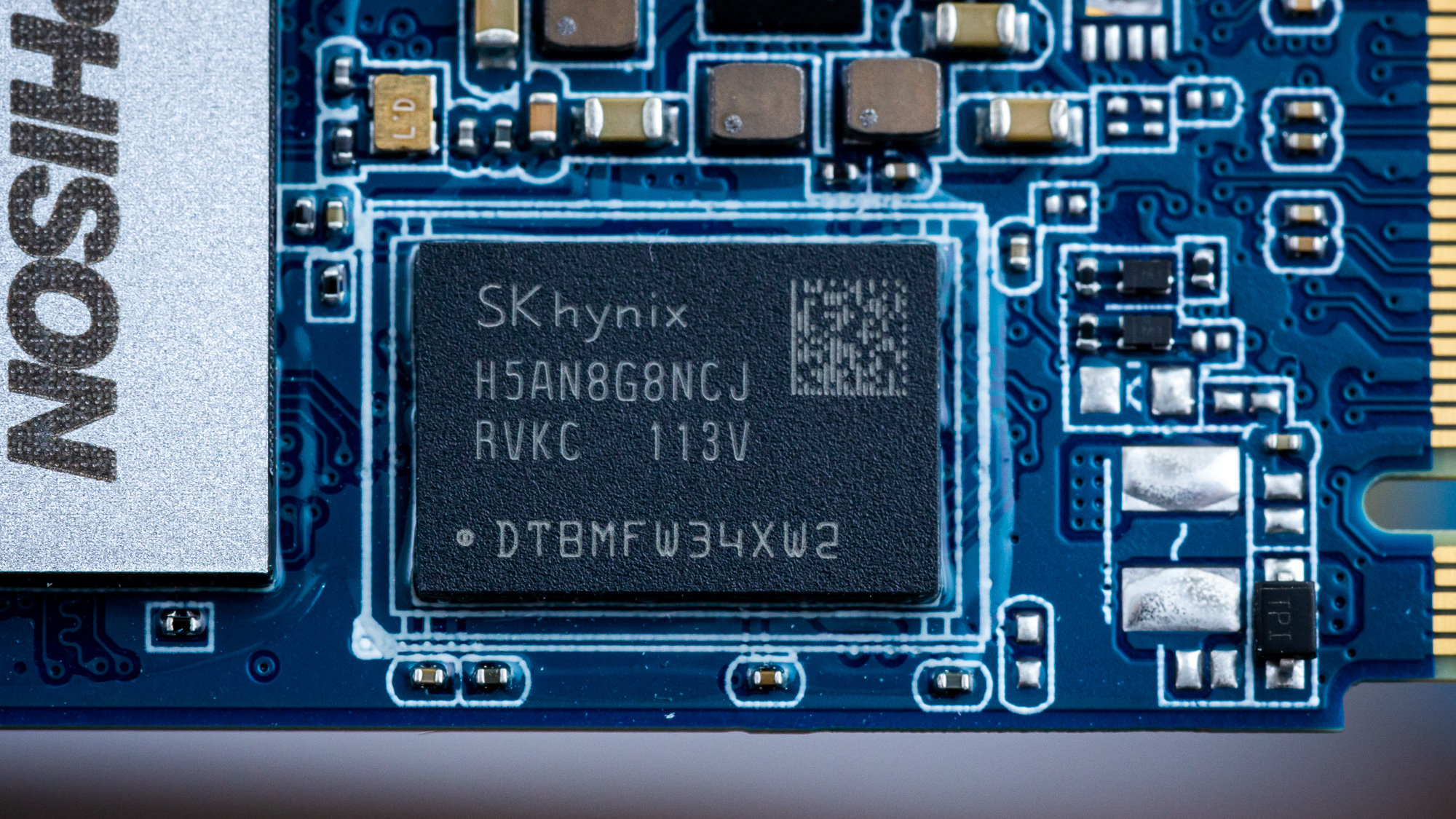
The Phison E16 was the first PCIe 4.0 consumer SSD controller on the market, launching with AMD support for the introduction of the PCIe 4.0-capable X570 platform. It was a bit of a stopgap solution, utilizing elements of the Phison E12 controller paired with a beefier PCIe 4.0 physical interface. However, it has shown that it has legs, being PS5-compliant with enough of a corresponding price decline to remain relevant.
However, it faces competition that uses newer technology and flash, including the InnoGrit IG5220 found on the HP FX900. Future competitors include SMI’s SM2269XT, seen in the ADATA Legend 850, and Phison’s own E21T. In addition, WD has its own competitive, proprietary controller in the WD SN770. Notably, all of these controllers are used for DRAM-less SSDs, but that makes sense if you’re not pushing the edge of the x4 PCIe 4.0 interface.
The DRAM is labeled H5AN8G8NCJR, or SK hynix C-die DDR4. “8G8” suggests 8Gb of memory in an 8-bit configuration, or 1GB of DRAM per module for a total of 2GB for the drive. This is more than ample but is a nice amount to see.
The flash packages are 96-layer BiCS4 Kioxia TLC dies, labeled TABHG65AWV. As these dies tend to be 512Gb or 64GB a piece, each of the four packages contains eight dies for a total of thirty-two. Such packages are often known as 8-die packages, that is 8DP, or alternatively octal-die packages, listed as ODP. There are limits to how many dies you can stack in a package, not only due to height requirements but also the need to maintain signal integrity. Bonding the offset dies can also be tricky. In any case, the E16 can manage thirty-two dies just fine.
MORE: Best SSDs
MORE: How We Test HDDs And SSDs
MORE: All SSD Content

Shane Downing is a Freelance Reviewer for Tom’s Hardware US, covering consumer storage hardware.
-
gggplaya FYI, I've bought several of these and the PNY SSD utility seems to work on these. Perhaps these are rebranded drives?Reply -
dimar For many cases I'd rather have no heat, more endurance, and less speed, as long as it's at least 500MB/s.Reply -
Alvar "Miles" Udell Anyone else wish these non-big label brands would focus on something that would really help differentiate them from the pack? As mentioned in the article the SK Hynix P31 and P41 drives are massive performers and are incredibly difficult to not recommend spending the very little extra money on when compared to a lower class drive like this, so they need to do something like start offering affordable "slow" 4 and 8TB drives for people who want them for the capacity.Reply -
seanwebster Reply
Most Phison controller-equipped SSDs are typically manufactured through Phison/their production partners in order to have some sort of warranty. They also hardly vary in fw changes. PNY, Inland, Corsair, Silicon Power Sabrent, Addlink, etc, are all selling what are essentially the same drives with different names/labels/heatsinks. Even the majority of Seagate's consumer SSDs are all Phison-based.gggplaya said:FYI, I've bought several of these and the PNY SSD utility seems to work on these. Perhaps these are rebranded drives? -
Lafong Replyevdjj3j said:Am I the only person who gets a Bible Belt vibe from that brand name, Inland?
Maybe. I don't understand the vibe.
Inland Steel was a major US corporation with thousands of employees throughout the 20th century. Out of Chicago. No connection to the Inland SSD outfit as far as I know. -
Viking2121 I got the Inland 1TB and 500GB PCIE gen 4 m.2 SSD and its been plenty fast, I don't need the best speed around but its quite a lot faster than a sata SSD and faster than a lot of gen 3 stuffReply -
Neilbob The problem I have with most of these SSD reviews is that the tests generally seem to be all synthetic and don't show how these things actually perform relative to each other in any kind of real-world scenario - and from what I've seen previously that difference is so tiny as to be virtually unnoticeable, especially for the sorts of consumers that these are aimed at.Reply
Puts cynical-old-codger hat on
Some people like to go on about how things like DirectStorage will make a massive difference - but will it really? It has to be programmed for, and it won't make things that already load fast much faster than they are. -
evdjj3j One of the ways Direct Storage is supposed to help is with decompression of assets. It will allow the decompression to be offloaded to a hardware accelerator or to the GPU for acceleration.Reply
